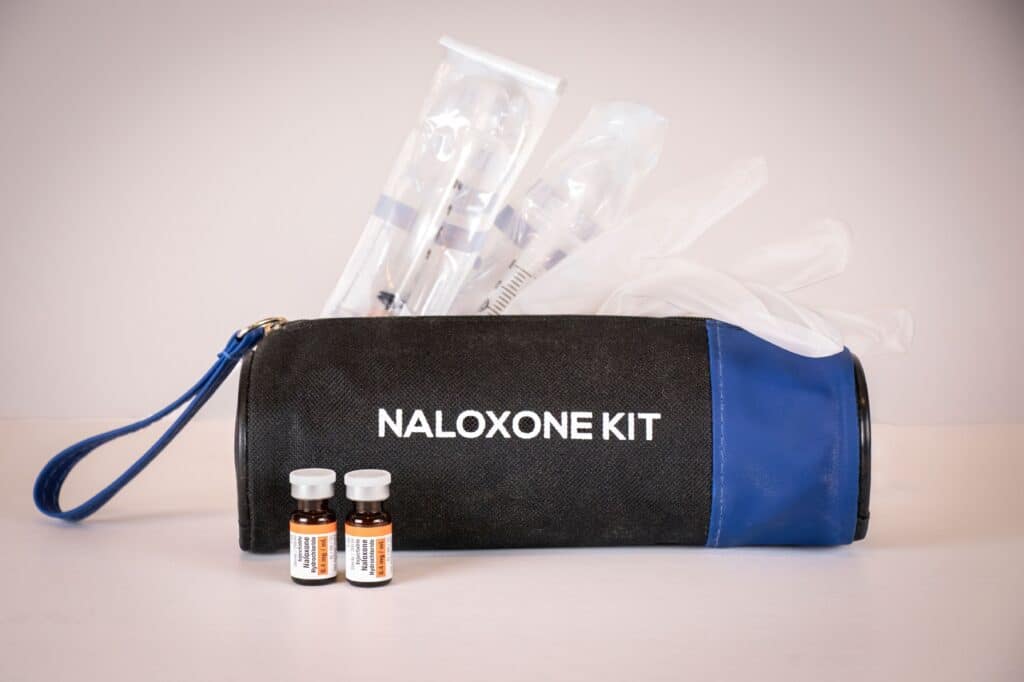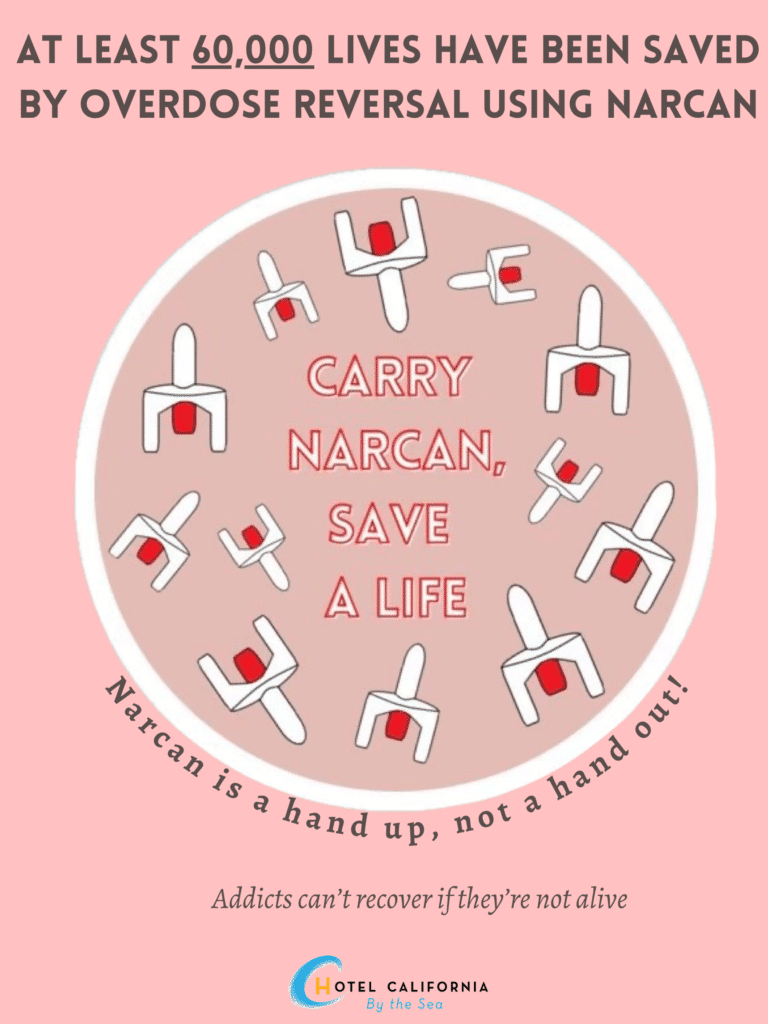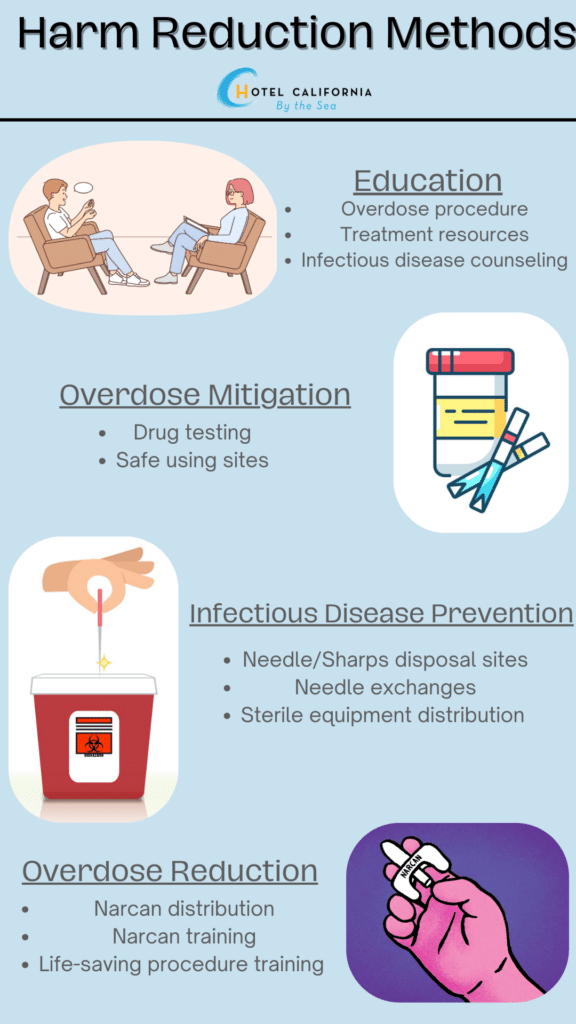What are Harm Reduction Action Centers?
Drug overdose is now the leading cause of death in the United States. Opioid addiction is driving the overdose death rate in the U.S., setting record highs with an estimated 112,000 deaths in the last 12 months. In this third wave of the opioid drug crisis, addiction experts and researchers are searching for new and effective methods to fight and treat this ever-rising threat. Harm reduction is an evidence-based approach to treating substance addiction and overdose that engages with people who use drugs and equips them with life saving tools and information.

With over decades of research on the impact of harm reduction strategies, research has found that it can provide individual and public health benefits when it comes to tackling substance addiction and overdose. Some of these benefits include prevention of overdose death, spread of infectious diseases, reduction in ER visits and other costly health care services that may not be as effective. The main goal of harm reduction is to keep people alive while they are using substances. Since its introduction, it has become known as a controversial method and way of thinking. Opponents believe it is promoting harmful drug use, while supporters believe it is a way to save lives.
What is Harm Reduction?
Harm reduction is an approach that gives people who use drugs, life saving information, support and tools to create and encourage changes that can save their lives. It focuses on prevention of harm rather than prevention of substance use itself. The program engages directly with people who use drugs to help prevent overdose, help prevent the spread of infectious diseases, and help reduce the stigma of drug use and people who use drugs. Harm reduction advocates argue that such strategies promote safe drug use to keep a person alive and it doesn’t mean they encourage drug use. It’s more about keeping someone alive and keeping them from overdosing until they are ready to get help.
Technically, harm reduction practices go against a federal law passed in 1986, which states allowing illegal drug use in any designated space, is against the law. So is harm reduction a form of enabling or can it really help drug users? It is a complicated debate. Despite the controversy, harm reduction action centers have begun to establish their claims with supporting evidence in helping those with substance use disorders and co-occurring mental health disorders.
As part of his strategy in addressing the opioid crisis, President Biden announced a Harm Reduction grant program that awarded $30 million in funding to support such programs and providers who are working to make substance use safer and prevent overdose death. Harm reduction is one of the key components in the U.S Department of Health and Human Services Overdose Prevention Strategy. It addresses the broader health and social issue through policy improvement, programs and safe practices. Implementing community driven public health strategies such as prevention, risk reduction and health promotion are examples of harm reduction.

According to research, an estimated one in ten people with a substance use disorder (SUD) receive any sort of treatment. And almost all of the people with SUD who have not received treatment at a drug treatment facility didn’t realize they needed treatment. Since its inception, many countries around the world have implemented this way of thinking and have seen great results in curbing and treating drug use. They were also created because statistics found that more than half of people who were found dead after an overdose were found alone. Today many states have harm reduction action centers working to promote alternative ways of treating the drug use crisis.
Harm reduction actions centers were created to provide the necessary tools and resources to keep people alive. In some cases, harm reduction action centers are able to reach those who aren’t accessing vital healthcare services and connect them to resources and services they need to stay alive and healthy. By engaging and empowering people who use drugs, it can help motivate them to set their own goals for a better life as well as improve overall physical, mental and social well being.
Benefits of Harm Reduction according to SAMHSA
- Connect individuals to overdose education and counseling. It can also refer people to treatment for infectious diseases and SUD.
- Reduce the spread of infectious disease transmission such as HIV, hepatitis and bacterial infections by providing sterile supplies and information for help.
- Distribute life saving overdose medication such as Narcan.
- Reduce overdose deaths by promoting programs and facilities that offer necessary services as part of compressive care.
- Reduces stigma associated with drug use, addiction and co-occurring mental health disorders. It helps promote the idea that drug use and mental illness is not a moral failing, but is a disease that can be treated.
- Builds a community that promotes health and healing for people who use drugs and as well as their families affected by it.

Foundational Principles of Harm Reduction
- Accepting for better or for worse that licit and illicit drug use is part of our current society and choose to minimize its harmful effects rather than ignore or condemn them. Accepting that behavioral changes is an incremental process and cannot happen overnight.
- Understand that drug use is a multifaceted phenomenon that includes behaviors ranging from severe drug use to total abstinence. Acknowledging that some ways of using drugs are much safer than others.
- Establish that the quality of individual and community life and wellbeing does not necessarily involve the end of all drug use.
- There is a necessity for non judgmental services and resources for people who use drugs and the communities in which they live in. It is important to meet people where they are at and treat them with dignity, compassion and respect.
- Help ensure that people who use drugs or have a history of drug use, routinely have a voice in the creation of programs and policies designed to help them.
- Affirm that people who use drugs are the primary agents of reducing harm of their own drug use and seek to empower, share information and support each other. Empowerment of individuals as the primary agent responsible for their own drug use.
- Recognize the realities of poverty, class, racism, social isolation, past trauma, sex based discrimination and other social inequities affect people’s ability to deal with drug related harm.
- Do not attempt to minimize or ignore the harms and dangers associated with illicit drug use.
- Commitment to universal human rights and focusing on quality of life over complete abstinence.
Check Your Insurance Coverage for FREE
Find out if your insurance covers addiction treatment in minutes. We accept most insurance!
Programs and Practices available at Harm Reduction Action Centers
- Syringe Service Programs (SSPs) – This public community based program provides clean needles, medical care and referrals to treatment for people who use drugs. It also provides other services such as providing safe injection equipment, vaccinations and drug testing kits. With 30 years of research, SSPs has been a proven safe, effective and cost saving tool to prevent risks of overdose deaths and the spread of infectious diseases. Research from the National Institute on Drug Abuse found that SSPs do not increase drug use. For people who utilize services from SSPs, they are actually more likely to reduce or stop drug use and enter into SUD treatment programs.
- Supervised consumption sites – Supervised consumptions sites are places where trained staff and clinicians can oversee people using drugs. These types of clinics are endorsed by the American Medical Association and other leading medical groups who believe in the harm reduction model of treating drug overdose deaths. In these centers, people are able to use illicit substances in a controlled setting where staff are trained and able to detect and respond to the possibility of an overdose.
- Drug checking – Drug checking is a harm reduction practice in which people check to see if their drugs have been laced or contain certain types of substances. Popular methods include fentanyl test strips and infrared spectrometry, all of which can be performed at harm reduction action centers and facilities. This helps the users know what kinds of drugs they may be taking and what precautions to take in order to avoid and overdose. Research has found that users change their drug use behaviors when their drugs test positive for fentanyl.
- Overdose reversal medications – Medications like naloxone and nalmefene are approved FDA medications for reversing opioid overdose. These medications are life saving tools that can prevent overdose death. Advocates are now working to have them more easily accessible and available to the public, as overdose death has significantly increased.
Reach out to Hotel California by the Sea
We specialize in treating addiction and other co-occurring disorders, such as PTSD. Our Admissions specialists are available to walk you through the best options for treating your addiction.
Treatment for Substance Use Disorder
Opioid use disorder can be a difficult addiction to overcome. With the help of harm reduction practices, users are more likely to change their drug use behaviors and eventually seek out drug addiction recovery programs such as Hotel California by the Sea. We specialize in treating opioid addictions and believe there is no such thing as a one size fits all when it comes to addiction treatment. Clients will receive a well rounded comprehensive treatment plan created to fit their needs.
We offer all levels of care including detox, residential and outpatient programs. Unique treatments such as CBT, DBT and group therapy help provide clients with a better understanding of their addiction and mental health struggles. We specialize in treating all aspects of addiction including physical, emotional and psychological. Addressing all aspects of a substance addiction will help provide better treatment and a successful recovery journey.
References
https://www.cdc.gov/ssp/index.html
https://harmreduction.org/about-us/principles-of-harm-reduction/
https://www.recoveryanswers.org/resource/drug-and-alcohol-harm-reduction/
https://www.npr.org/2023/12/12/1217838644/drugs-opioid-addiction-injection-fentanyl-mother
https://www.samhsa.gov/find-help/harm-reduction
https://nida.nih.gov/research-topics/harm-reduction
https://publichealth.jhu.edu/2022/what-is-harm-reduction
https://www.psychologytoday.com/us/basics/harm-reduction
